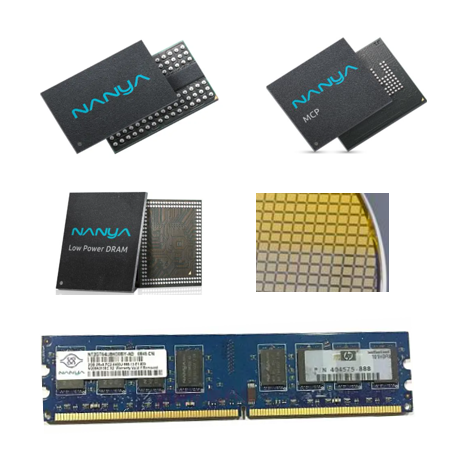1. Company Overview of Nanya
Nanya Technology Corporation specializes in memory chip R&D and holds multiple core patents in the semiconductor field, establishing itself as a global leader in DRAM manufacturing. The company operates one 8-inch wafer fab and one 12-inch wafer fab. With subsidiaries in the U.S., Japan, Europe, and mainland China, Nanya ensures localized customer support and agile responsiveness to global market trends.
Beyond consolidating its market share in standard memory, Nanya actively targets niche memory markets. Its core product lines include server-grade memory, consumer memory, and mobile RAM, which are widely used in computers, smartphones, tablets, and other advanced electronic devices.
2. DRAM Product Selection Guide
Standard SDRAM transmits data only on the rising edge of the clock signal, while DDR memory transfers data on both the rising and falling edges, doubling its performance. This makes DDR a "Double Data Rate Synchronous Dynamic Random-Access Memory." DDR achieves higher data transfer rates than SDRAM at equivalent bus frequencies. As a volatile storage device, DDR requires periodic refreshing to maintain data integrity.
Key DRAM Types:
1) SDR (Single Data Rate): Transmits data only on the clock’s rising edge.
2) DDR: Transfers data on both clock edges, doubling bandwidth.
3) DDR2: Features 4n prefetch (twice the read/write capability of DDR).
4) DDR3: Operates at lower voltages and supports 8n prefetch.
5) DDR4: Delivers higher operating frequencies and data bandwidth.
6) DDR5: Boosts frequency/bandwidth further, reduces voltage, and supports 16n prefetch.
7) LPDDR (Low-Power DDR): Optimized for low voltage/power consumption, with flexible burst lengths and data widths. Ideal for portable electronics.
8) LPDDR4X: An ultra-low-power variant of LPDDR4, offering enhanced energy efficiency.

Figure 1: Main DRAM Types
DRAM usually be divided into 4 grades according to the application scenario: consumer grade, industrial grade, automotive grade and military grade. Each grade has different requirements for chips.
(1) Failures in fields such as industrial control and automotive electronics may cause serious consequences, so the stability requirements for chips are relatively high. The chips are required to withstand the influence of harsh environmental factors such as unstable power supply, temperature and humidity, and ensure long-term stability.
(2) The service life of industrial chips is required to be more than 5 years, and the working environment is relatively harsh. Therefore, the temperature range is required to be -40°C~85°C, the service life is required to be more than five years, and the corresponding reliability test is 1000 hours. Some outdoor products even require 2000 hours of reliability.
(3) DPPM (Defect part per million) indicator: consumer chips are less than 500, automotive grade is 0~10 defects, and industrial grade is between the two.
(4) Automotive-grade chips need to meet the AEC-Q100 reliability standard, the international standard for software functional safety ISO 26262, and the automotive safety integrity level ASIL (the level defined by the ISO 26262 road vehicle functional safety standard).
3. Nanya DRAM product series selection
(1)Nanya DRAM Selection Table
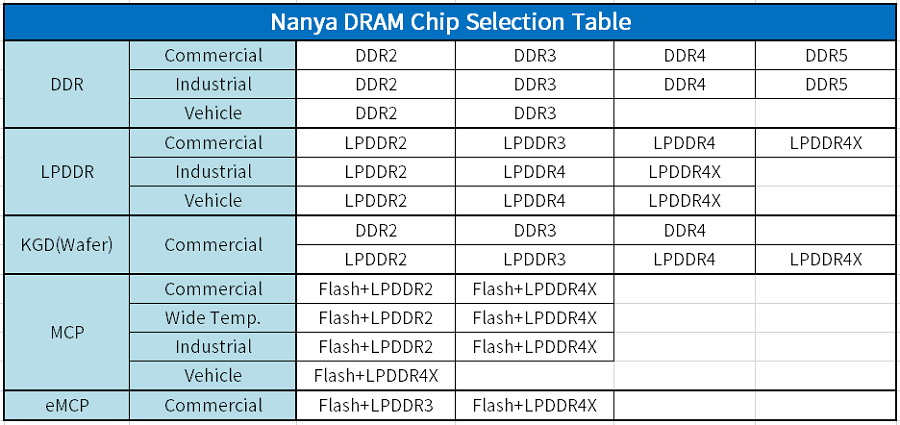
(2)Nanya DDR Selection Table
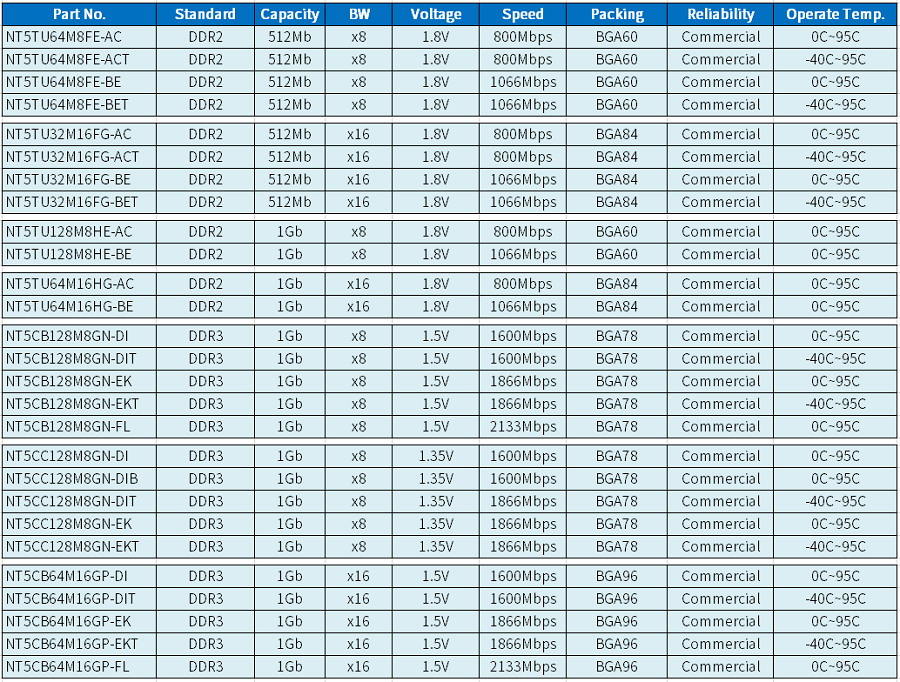
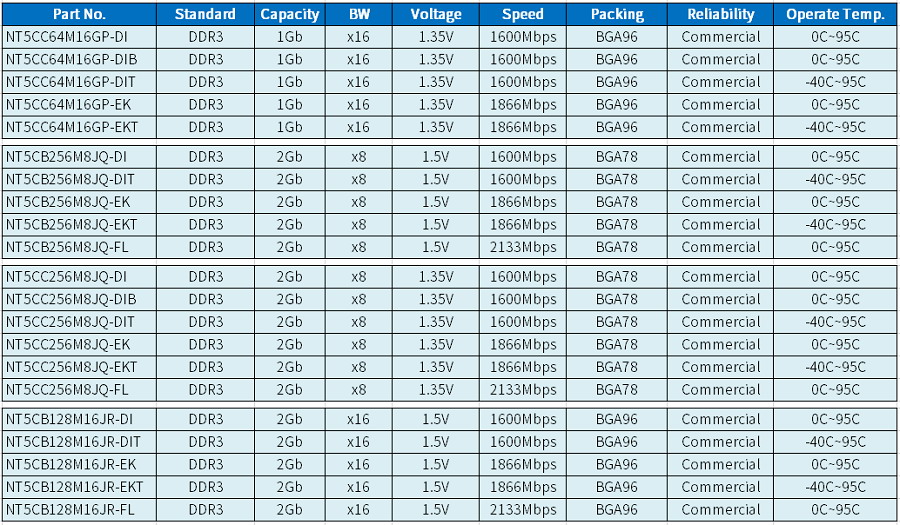
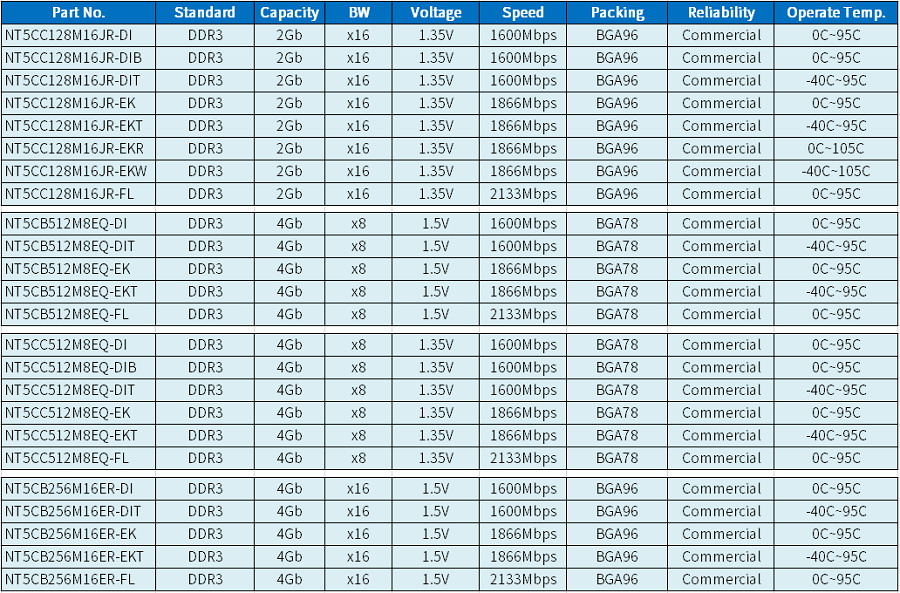
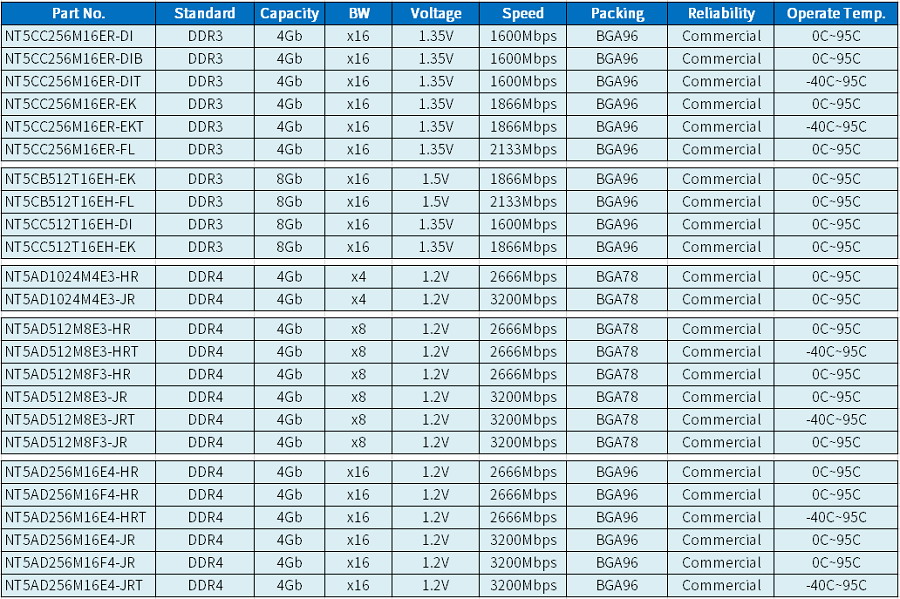
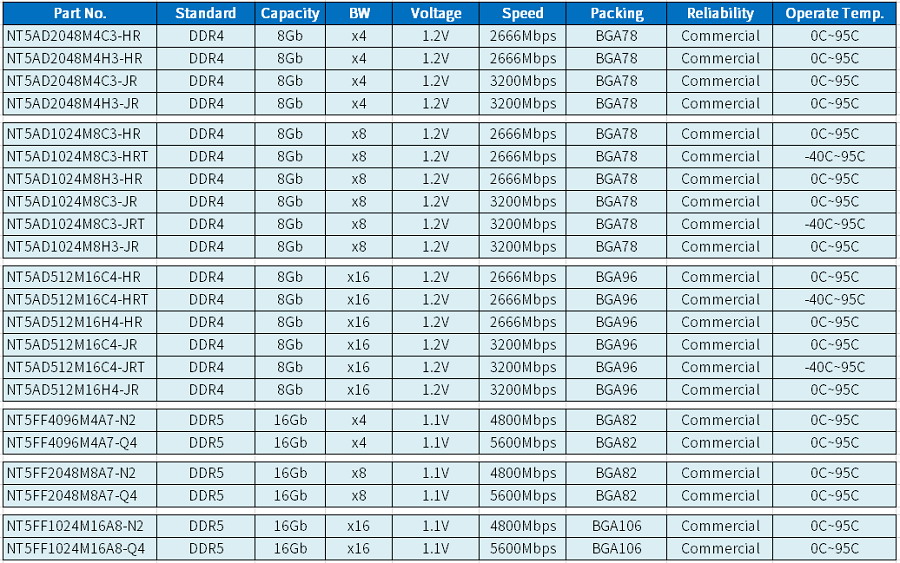
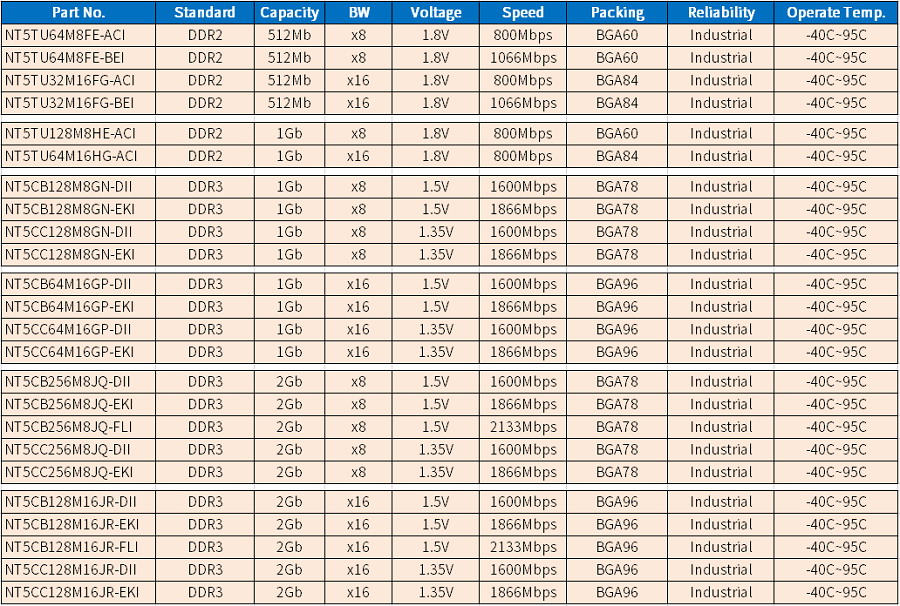
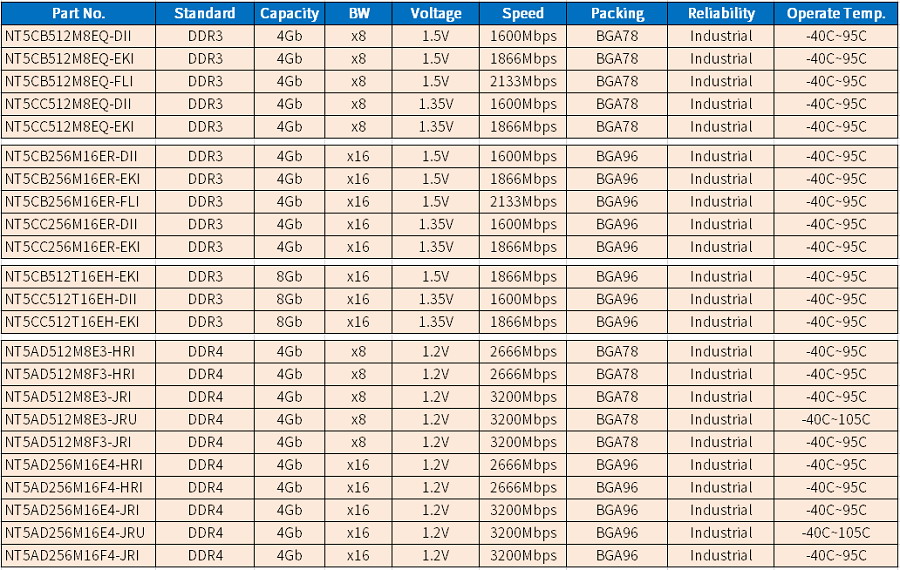
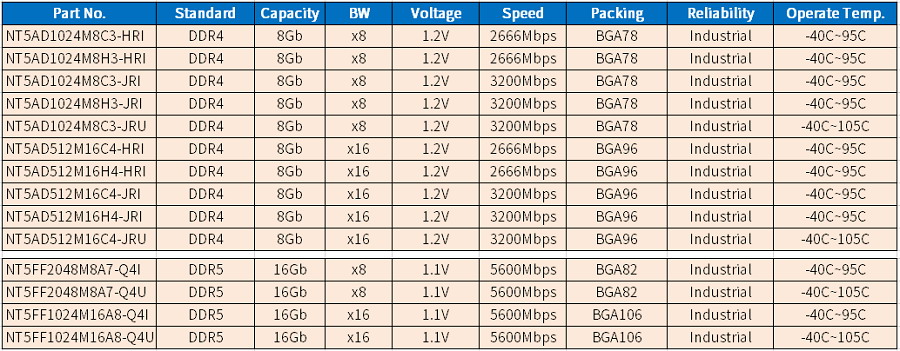
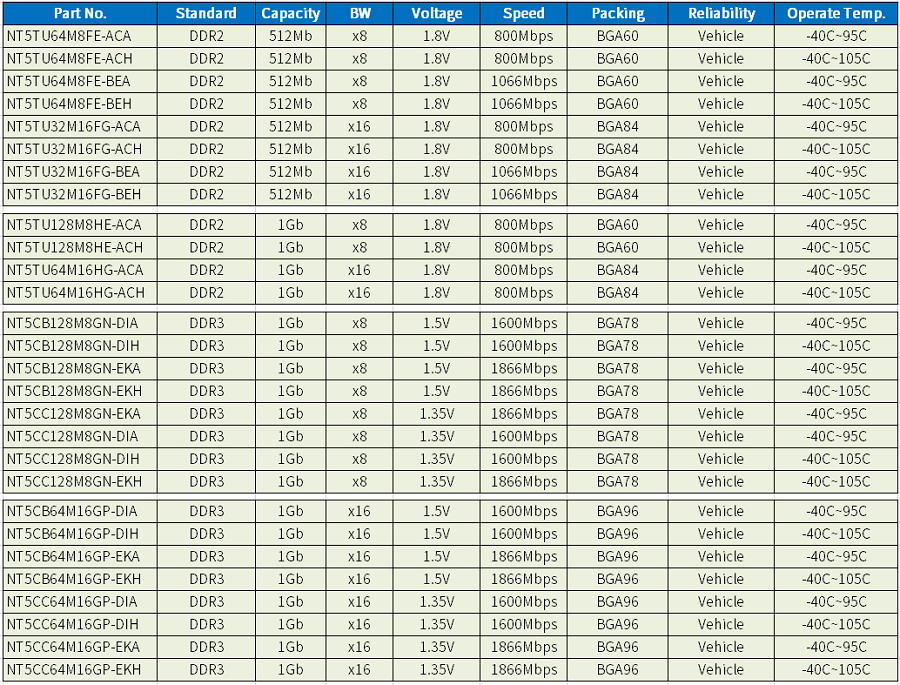
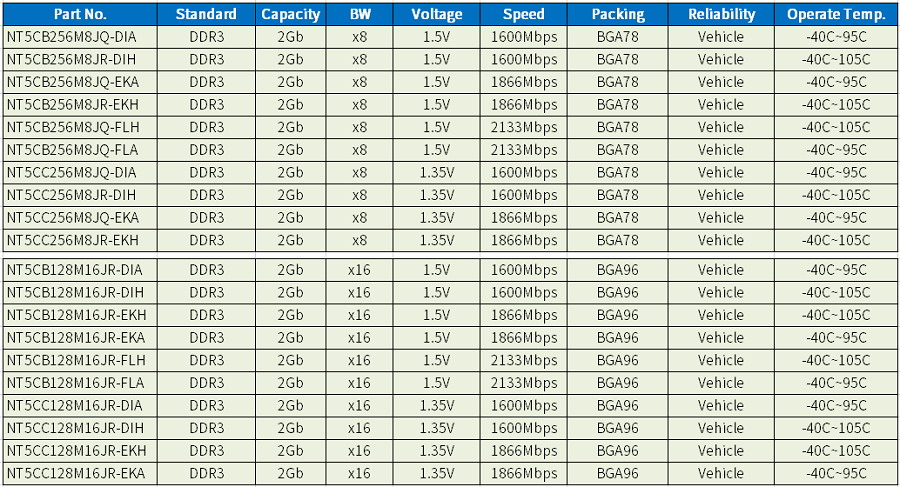
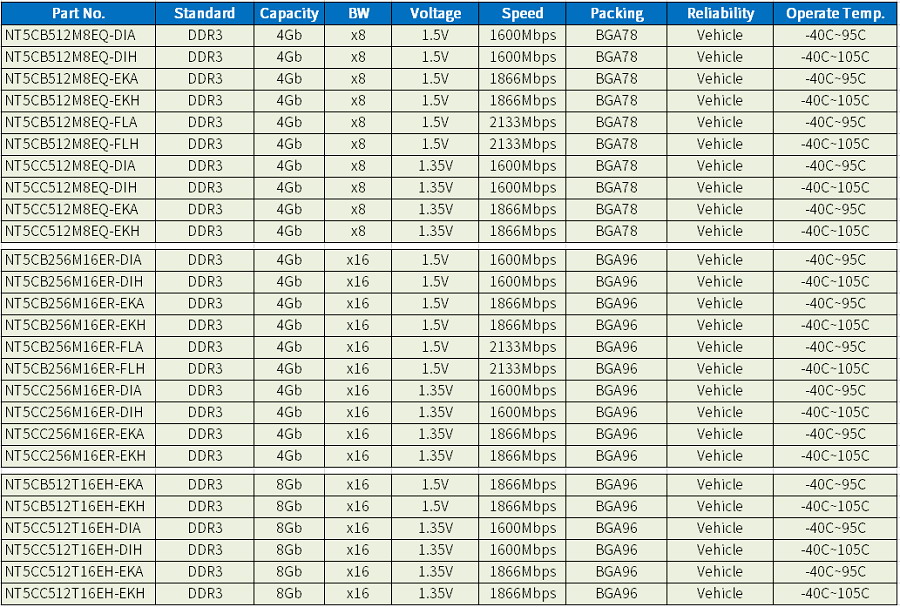
(3)Nanya LPDDR Selection Table
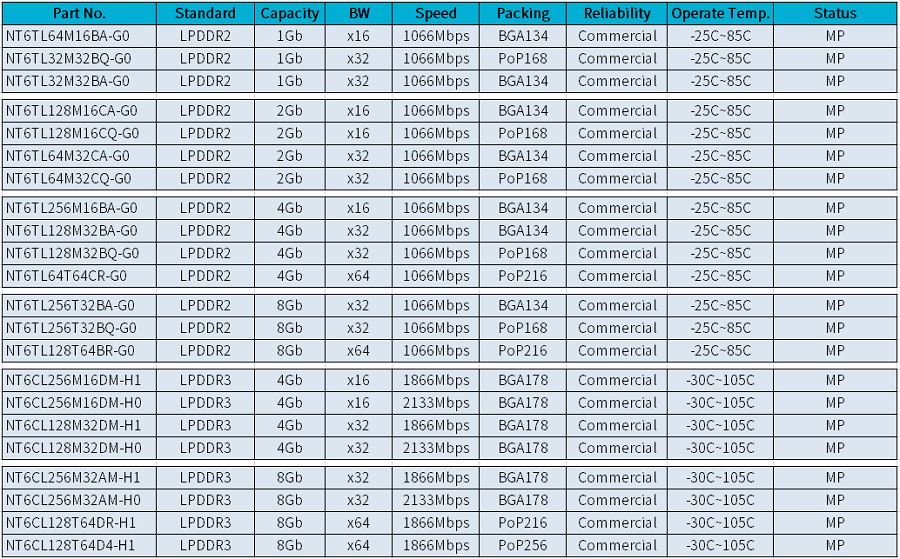
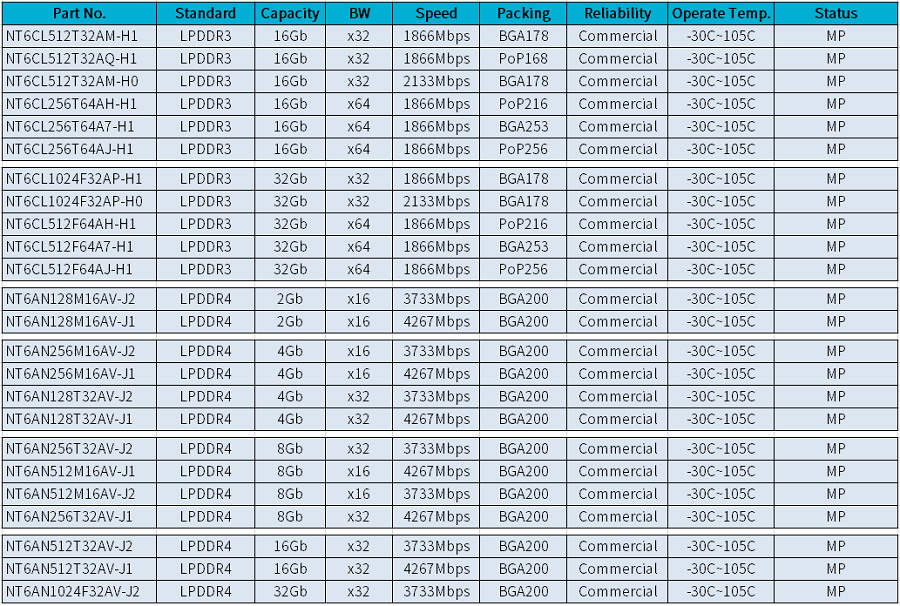
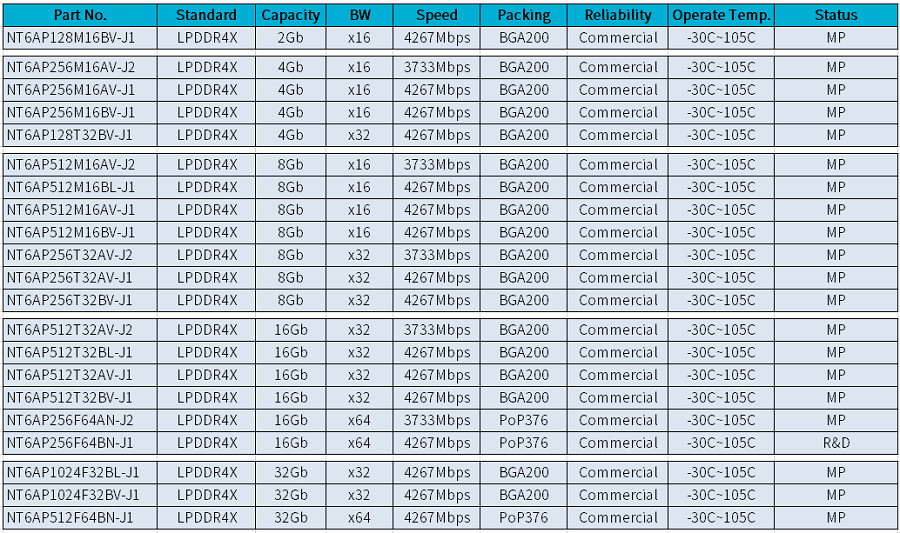
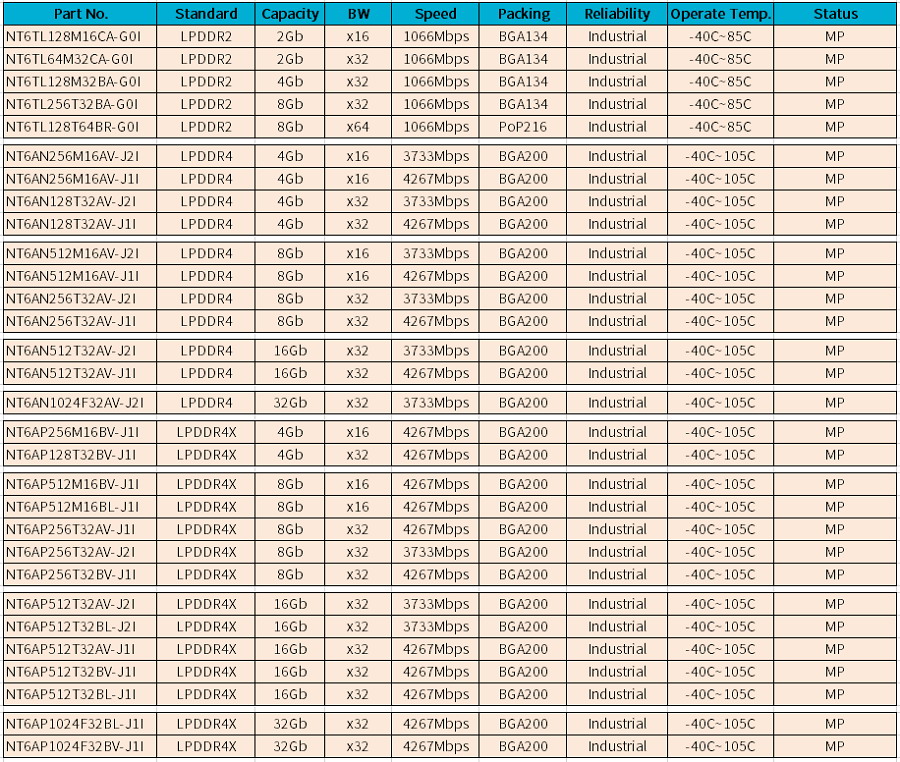
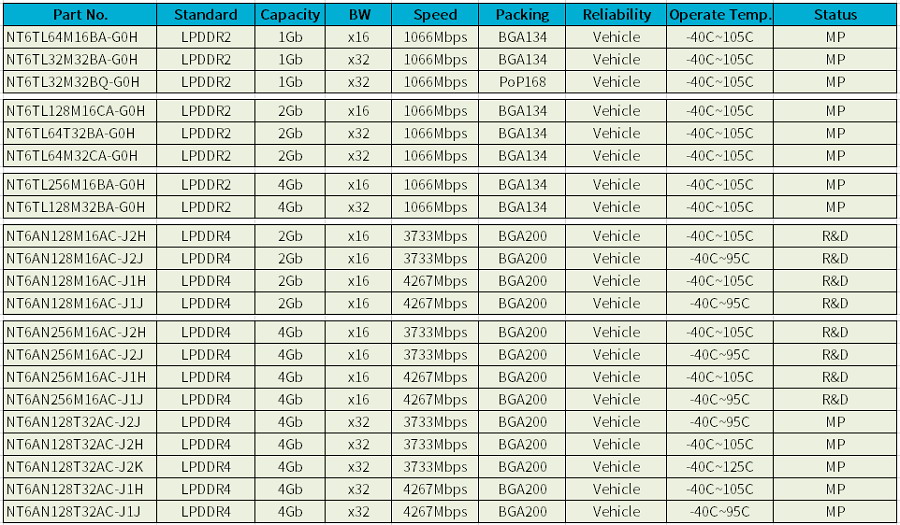
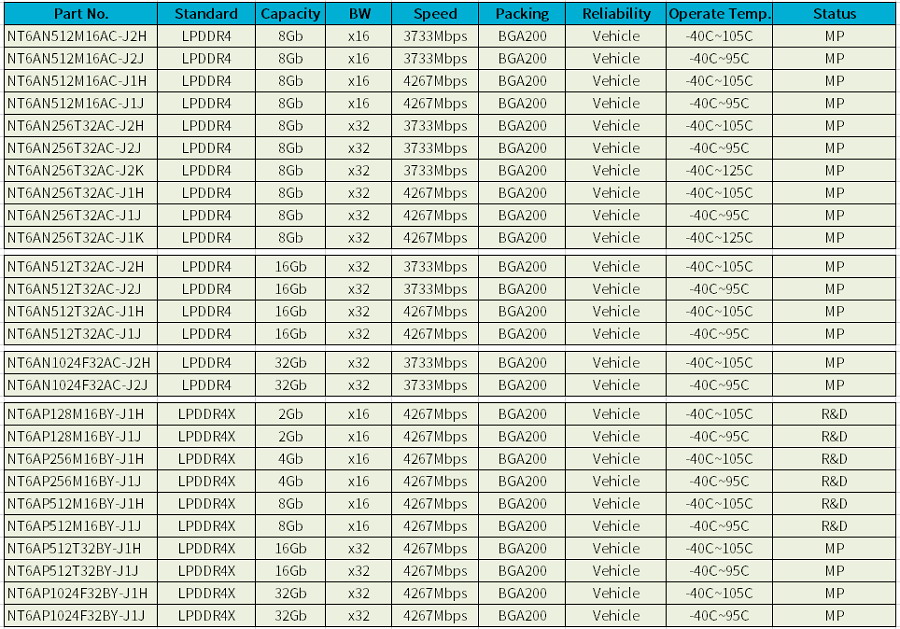
(4)Nanya KGD Wafer Selection Table
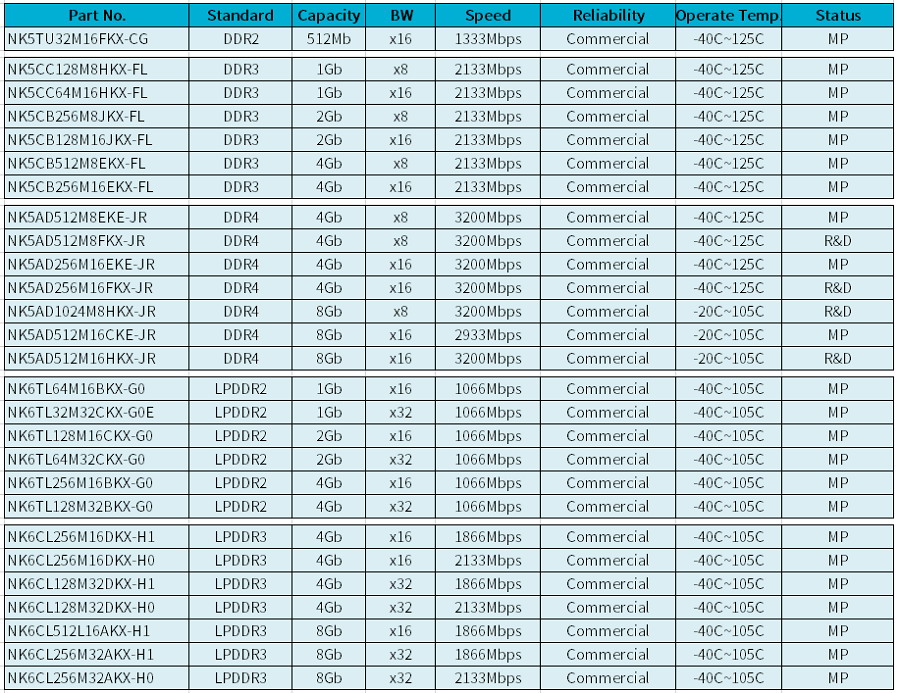
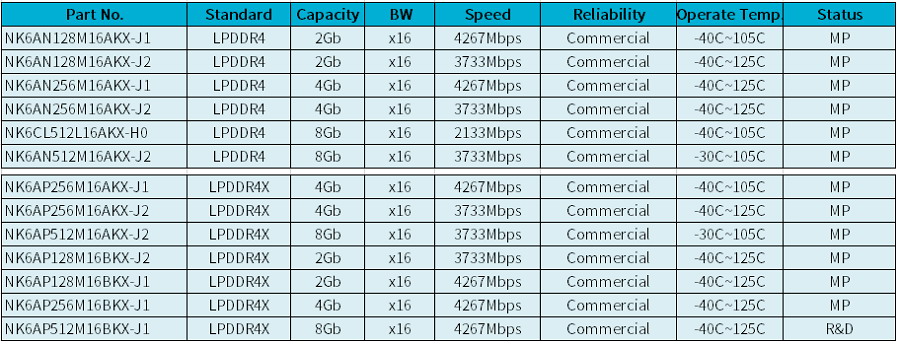
(5)Nanya MCP/eMCP Selection Table
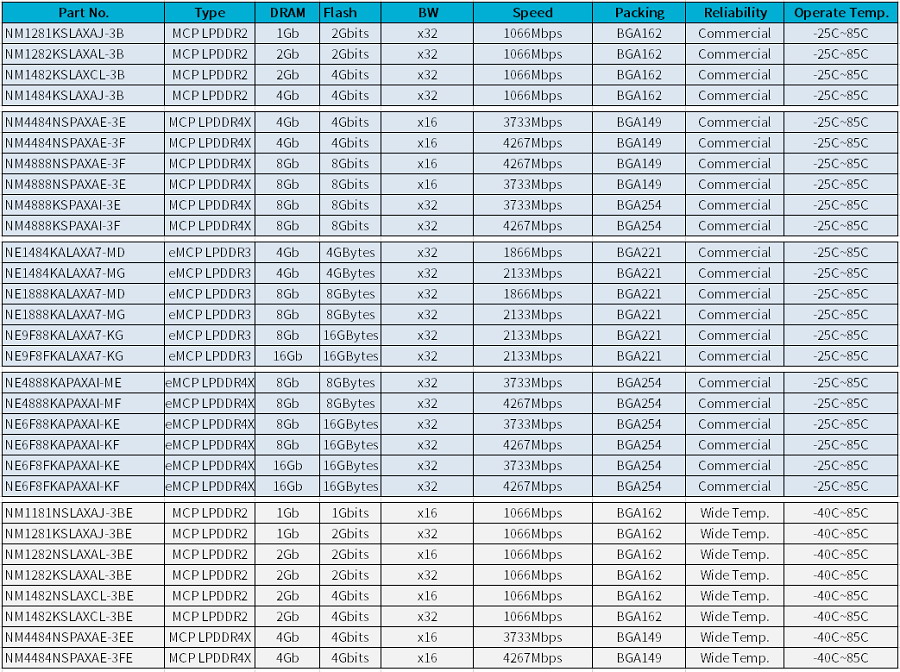
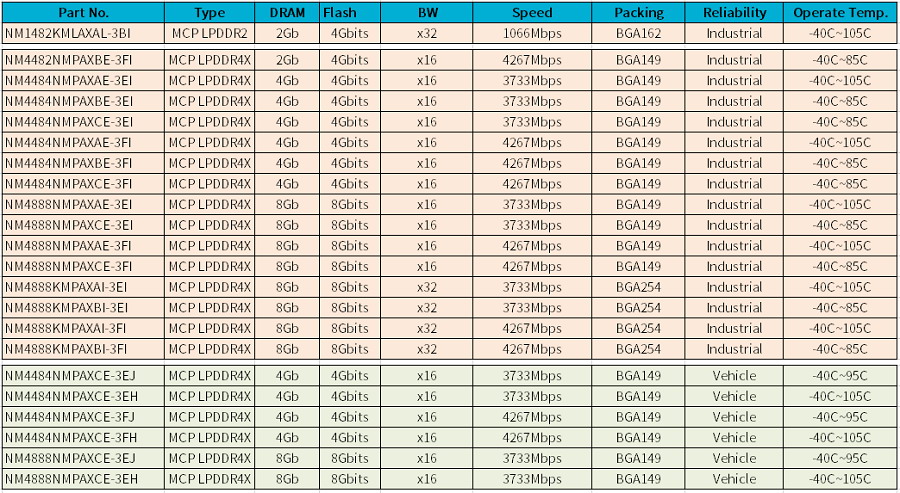
For more information about Nanya DRAM/LPDDR/KGD/MCP/eMCP products, please contact us.

